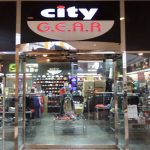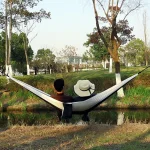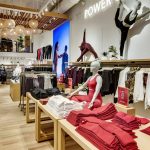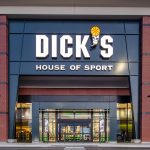Following their recent acquisition of Watermarks watersports division, Confluence has finalized the positioning for its brands, creating a structure that is designed to allow the company to distribute multiple brands across multiple channels. For any manufacturer with a multi-branded strategy, this is a delicate process that requires balancing brand image, brand marketing budgets, RD&D, margins, and the total bottom line with retailer and consumer expectations for each individual brand.
The company developed a “good better best” tiered strategy in its recreation, sit on top, and touring kayaks, while Mad River remains the lone brand in the canoe category. The biggest change to the positioning of the various brands is that Dagger will be branded exclusively for the specialty dealer and will offer a full line of paddlesports products.
In an exclusive interview, Rich Feehan, Confluences CEO, told BOSS that Dagger will have the most limited distribution with a full family of products. “Wilderness Systems and Wave Sport will have minimal overlap with some of the specialty chains,” he said. “We were not looking to radically change Perceptions go-to-market strategy or their distribution. The people who have traditionally sold Perception will continue to do so and the distribution will be a little bit wider [than Wilderness Systems and Wave Sport]. The only brand with wide open distribution will be Mainstream.”
In the whitewater market, this leaves Confluence with two main brands Wave Sport and Dagger and Perception offering a smaller product line. Dagger will be positioned as the top-end specialty dealers boat and priced in the upper third of the market. Feehan said that the whitewater business was one area that was working very well, and they didnt want that to change. Moving forward, design, advertising, and marketing will remain separate between Wave Sport and Dagger leaving the brands to compete against each other on the showroom floor. Even the sponsored paddling teams will remain separate.
Feehan doesnt feel there is much risk of cannibalization between the two brands. “We feel like competition is a good thing and we wanted to keep it between these two brands
These are two strong brands with unique positions in the market and strong market share.”
Confluences largest grouping of categories – recreation, touring, and sit-on-top kayaks – also houses the largest number of brands. Wilderness Systems is positioned in the same niche as Wave Sport in the whitewater category. Described as “the defining brand of the group,” it will be available to specialty retailers and select chains, priced at the top of each of its categories. Dagger will be designed for the recreational enthusiast customer in the specialty retailer. Dagger will be priced in the upper third of the market.
Perception is designed to be the brand that brings people into the sport. Perception boats will be competitively priced and available to specialty and select chains. Mainstream will fill out the line and is designed mainly for the value priced market and chain distribution. The price points will be in the lower third of the market, and the brand will target general sporting goods retailers, but will be available to all channels. The key focus of Mainstream, according to Feehan, is to have the ability to deliver volume to sporting goods stores in-season.
Fishing is a category that has been performing well for retailers across the board. The category will be supported by several brands, including Wilderness Systems, Perception, and Mad River Canoe. Mainstream will also have a limited selection of product in the category but it is not a main focus.
While the Watermark name was included in the acquisition of these various brands, Feehan told BOSS there are no plans to use it and it will likely just fade away.
Confluence still has much work ahead of them with integration issues still to be resolved, but Feehan told BOSS that the company is keeping to its schedule and that there has been good coordination between the customer service facility in Arcata and their production facilities.
“We are very confident in the time we are pulling things together,” he said. “We strategically designed this so that the timing would be in our favor. We have hired the right people for our customer service team. We have the Operating Systems in place. We have taken the appropriate steps to mitigate risks, so if there are any bumps in the road, they will be minor.”
While some are predicting capacity shortfalls and late deliveries for Confluence, Feehan says that everything is under control.
“The key to this industry is peak capacity,” he said. “This facility in Easley has more than enough capacity to build all of its existing orders and the additional orders from Confluence as well,” he said. “We ship 60% of our goods in a four month window starting in January. If this transition took place during that time we might have some delivery issues, but right now everything is on-track.”
Feehan went on to say that once the two companies are totally integrated the Easley facility will increase its available capacity by 20%. Likewise the production facility, process, and equipment in Easley has been deemed one of the best canoe and kayak manufacturing facilities in the world, making their decision to move to this location obvious.
Confluence also announced that they had restructured their sales force, bringing in some new faces and picking and choosing from the existing Confluence and Watermark sales reps. Feehan said that this new team will give them the best opportunity to sell across all channels.
Looking forward, Feehan feels that the best opportunity for the collection of brands under the Confluence banner is to leverage each one to best serve the different channels of distribution and minimize any channel conflict. With many different retailers competing for the same customer, this could be a difficult task, but with this variety of brands, it certainly seems plausible.















